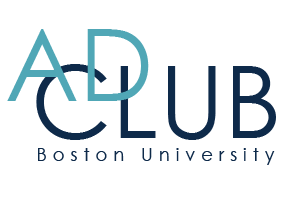Knowing Your Audience: A Brand Exploration of Chamberlain Coffee
Segueing from posting weekly Youtube content to becoming a coffee mogul is not a particularly common route. However, for 23 year-old influencer Emma Chamberlain, this path led to an estimated $20 million company. Chamberlain launched her brand Chamberlain Coffee in 2020 when she was 18 years-old. She had amassed a following on Youtube and other social media platforms and was known as a chronic coffee consumer. Through her persona as a caffeine-obsessed teenager, her transition to selling coffee was seamless and felt genuine.
When Chamberlain Coffee first launched, it was strictly sold online and only consisted of whole bean coffee bags. Now, her brand extends to a diverse range of products including single-serve pouches, matcha powder, and pods for Keurigs.
As her range of products has expanded, so has the accessibility of the Chamberlain brand. Now, Chamberlain Coffee can be found in Walmart, Target, and Sprouts. Moving the product into brick-and-mortar locations presented the challenge of making the brand appealing to individuals unfamiliar with Chamberlain. When she first started the brand, she had a fanbase of over 12 million subscribers on YouTube and over 15 million followers on Instagram to fuel the initial launch of her brand. The packaging of Chamberlain Coffee products is effective in appealing to her primarily Gen-Z audience through the use of vibrant colors and animal illustrations that corresponds with either a specific flavor or type of coffee.
Due to the success of her company, Chamberlain has expanded her reach to 8,500 retailers, selling over 100 products, according to an article by Forbes. In order to appeal to a wider audience, Chamberlain curates which products she sells at certain retail stores based on the store’s consumer demographics. The packaging of the products also highlights various health benefits to appeal to potential buyers outside of her traditional Gen-Z fanbase. The packaging highlights that certain lattes are dairy-free, and others contain coconut and almond milk with only one gram of sugar. Featuring these facts about the contents of the beverages on the product itself increases its accessibility and desirability to consumers.
Chamberlain also channeled a lot of her advertising and marketing efforts through the lens of sustainability, a cause generally associated with members of Gen-Z. When Chamberlain launched coffee pods, a move that enhanced the brand’s convenience and reach to a wider audience, she promoted that they are commercially compostable. The casing of the pods themselves are made out of plant-based materials to advocate for environmental sustainability.
A challenge Chamberlain could have encountered during the brand’s initial launch was a feeling of inauthenticity, often felt by audiences following influencer brand announcements. Influencers moving into non-entertainment spaces can be perceived as a cash grab to generate profit with little regard for the product. Chamberlain avoided this issue by being cognizant of her social media presence and how she is perceived. In her weekly YouTube videos, she recorded herself going to local coffee shops and getting her usual coffee order to ensure that it felt like a natural transition when she announced her coffee brand. Chamberlain used her status as a widely perceived coffee connoisseur and frequent consumer to garner trust amongst her fans and prove that she has what it takes to produce quality coffee.
Chamberlain Coffee is an excellent example of using knowledge of your audience to guide business decisions and drive increased success. Chamberlain first connected with her following to build a name for the brand and get her foot in the door with well-known retailers. When transitioning into brick-and-mortar shelves, she and her team strategically placed particular products based on consumer preference to inform which products would perform best in various locations. Finally, she initiated brand collaborations and promoted sustainability to engage her Gen Z followers while reaching buyers outside her fanbase. In this example, it’s clear that understanding your target audience is key to maximizing commercial success.
-Bridget Frawley-





